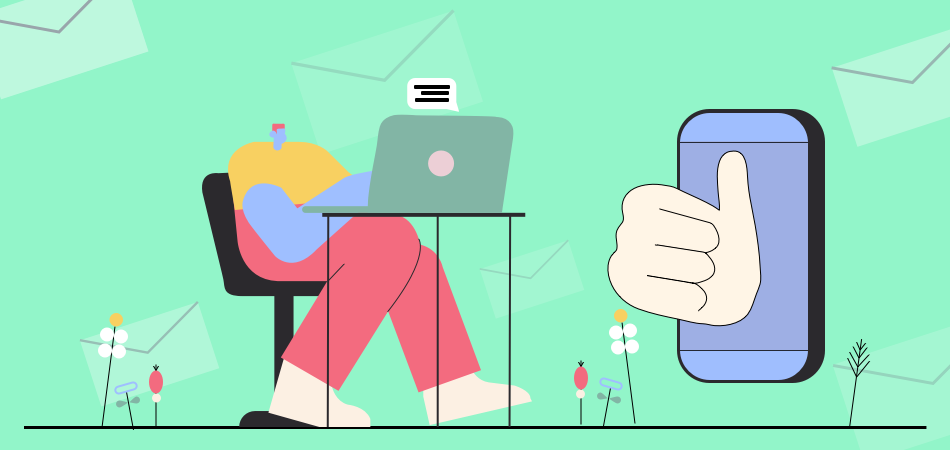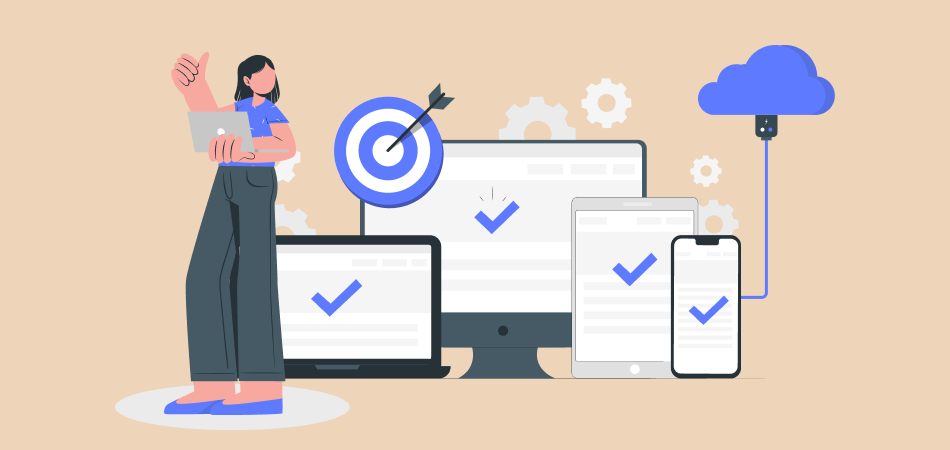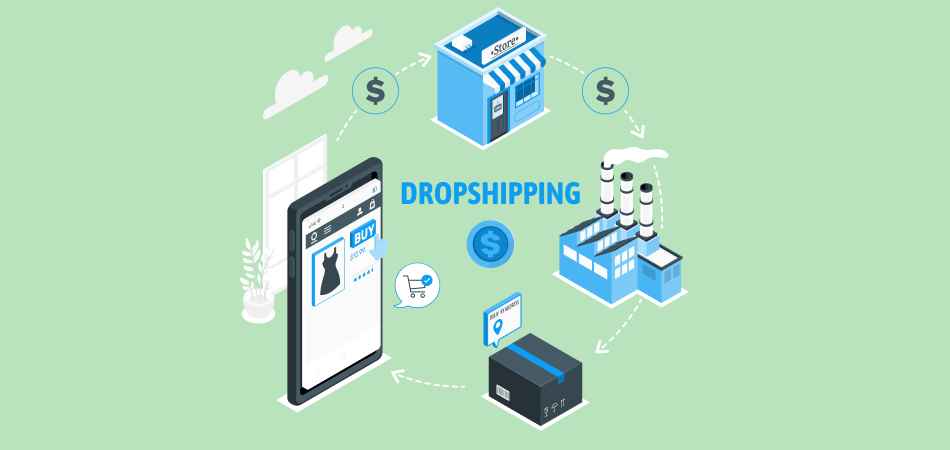10 Types of Welcome Emails to Convert New Customers

After signing up for a mailing list, most customers expect to receive a welcome email. It's a huge opportunity to reach out to your new subscribers who just confirmed their interest in your service. Email welcomes are one of the best ways to reach new subscribers.
You should get on board and start sending these well-performing welcome emails if you don't send them yet.
What Is a Welcome Email
Welcome emails are often part of a series of onboarding emails that are sent to any new or existing customers. In some cases, these communications might be a confirmation of your subscription or a post-purchase email. This email is not sent to non-engaged recipients, but to those who have explicitly chosen your brand.
In addition to the welcome email, the rest of your correspondence with a new customer is built upon it. Your welcome message is the one everyone will see whether they make a purchase or sign up for your company newsletter, which means the impression it leaves will compound over time.
Why Welcome Emails Important
Keep in mind that open and click rates do not indicate how successful your welcome email is.
For maximum conversion, you'll need to tweak subject lines and body copy. Welcome emails are designed to guide users through your onboarding process.
| Get Started Now to Grow Your Online Business with the Best AliExpress Dropshipping Tool - DSers! |
- Increases brand credibility: Newly discovered brands are notoriously difficult to trust. Warming up new members faster with a welcome email can push them further through your sales funnel, so make sure your message is well crafted.
- Great tool for storytelling: By telling your brand story, revealing some interesting facts, or giving a "behind the scenes" look, you can effectively share your story.
- An incentive to buy: Customers love these welcome emails based on their high conversion rate.
- Engage new subscribers: Often, brands invite customers to follow them on social media or participate in a survey so that their profiles are enriched.
- Show what you offer: You can showcase your products, and introduce your brand and your best offers in a welcome email.
- Appreciate customers: Send a "thank you for joining our mailing list" email to show your appreciation to your customer.
Welcome Email Is a Big Deal
The following stats, collected from BigCommerce partner Soundest, demonstrate how welcome emails can do the following:
- An open rate of 45.7% (compared to 18.8% for promo emails)
- A click rate of 9.7% (compared to 3.8% for promo emails)
- A conversion rate of 1% (compared to 0.17% for promo emails)
- Emails generated 61 cents per email (compared to 10 cents for promotional emails). Optimized emails can generate $3.36 in revenue per email.
According to the stats we've seen so far, sending a welcome email should be a no-brainer.
Components of a Great Welcome Email
How do you write an excellent welcome email? Even though there is no one-size-fits-all email format, there are a few key elements to consider to make your email stand out. Some of these elements are:
- Interesting subject lines: Do you know how to make a great first impression? Ensure your emails are opened. You need short, to-the-point subject lines that make it clear who you are, what you are sending, and why it matters.
- Content suggestions: Providing the next steps for interested customers is also an important part of welcome emails. If your customers are curious as to what you do and how you do it, a good place to start is by providing links to the great content on your website.
- Custom offers: Personalization enhances the value of your welcome emails. Welcome emails can encourage ongoing customer interest by offering customized offers based on the information consumers have provided or the data from public, social platforms.
- Make it easy to opt-out: If users are not interested, they should be able to easily exit. Provide the option for customers to unsubscribe from your emails so they can decide how much contact they want from you in the future. An incessant stream of emails that aren't easy to stop can sour a budding business relationship.
Best Types of Welcome Email
1. Personalised welcome emails
If your email appears as though it has been specifically tailored for your prospect/customer, you can often expect a positive response.
In contrast to a generic automated email, prospects would feel more appreciated receiving an email from a real person at your company. It may help you gain their attention, and in the future, they may become loyal customers of your company.

Furthermore, the sender explains what the subscriber can expect from periodic emails. The subscriber receives a personal message from the company's top executive as well as a clear overview of what will be arriving in their inbox.
2. A product-specific welcome email
It is used to introduce the prospect to your product or service. It should be written so that the prospect can understand how to use your product or service.
For the prospect to understand what your product or service can do, you should include a video tutorial or a link to a complete guide in the email. Similarly, in your welcome email, you should offer help to your new users.
3. Email after a sign-up
The purpose of this email is to thank the prospect for signing up to receive emails from your company, including newsletters, tips, and tricks.
You should avoid being too salesy when mentioning your product or service in the email, although it is an excellent chance to advertise your business. It can annoy your prospects and make them withdraw from you.
By directing the recipient to the resource page, the sender is helping the subscriber learn more about its product or service.
4. Email that offers a discount code
Your welcome email can contain a discount code that will motivate the new subscribers to sign up for your newsletter. A common tactic for converting prospects into customers, it works well. Give them a discount of 10% or 20% to entice them to make a purchase.
A special discount is included in the above email along with the welcome. Discounts like these can increase conversions. Everybody loves discounts, which is one of the reasons they buy things.
5. An email with a video message
The creative possibilities are endless. If you want to impress your prospects, you can go the extra mile and go beyond just a simple email copy.
You can personalize your email by adding a video that gives prospects an insight into your product. Such emails are highly engaging and deliver outstanding results.
6. One that has a company promise
You can convert subscribers into customers by using emotional triggers. Offering a discount is a common emotional trigger, as we have already seen above. A promise can also evoke an emotional response.
Along with welcoming subscribers, the mission of the company is also emphasized. It builds trust, and subscribers are more likely to convert as a result.
7. Creating a deeper subscriber connection
Offer more ways to deepen the connection with your subscribers by letting them know what's next. Don't just say, "Buy now."
Make sure you let them know about other ways they can join your community or get involved, such as social media, nearby events, and local stores.

The welcome email is the beginning of a relationship, and not all subscribers are ready to buy right away. You can build trust and excitement in your brand by offering these lighter ways to connect first.
8. Offering a free trial
A prospect who has signed up for a free trial of your solution receives this welcome email. You must send follow-up emails to make the prospect subscribe to your plan and become a paying customer.
In the email above, in addition to thanking the user, a CTA is included. Your free trial can help you close the deal if you encourage the user to try your product.
9. Welcome email after account creation
This type of welcome email is sent to new users whose accounts have been created, just like you send a welcome email to prospects after they subscribe.
The email includes a link to a webinar in addition to the welcome message and account information. A new user won't face any issues while using the tool because there are links to guides and video tutorials.
10. An email after a purchase
Prospects become customers when they purchase your product or service. You should welcome them to your team and thank them for their purchase.
As they are now paying customers, it is time to roll out the red carpet for them. You already did that when they subscribed to your newsletter and created an account with you. You can guide the customer on how to use your solution in addition to thanking them.
Tips for Writing a Welcome Email
Make the subject line catchy
According to research, more than 90% of welcome emails are opened, but only 23% are read. Your welcome email may not be noticed by your new customer if it doesn't catch their attention. When it comes to increasing email open rates, the subject line is your best tool. Customers will be curious about your content if you have a catchy and actionable subject line.
Outline your value proposition
It may seem as if this is an unnecessary step, but it has some significant benefits. Customers are reassured that they made the right choice by getting this reassurance.
Keeping your customers reminded as to why they created an account with you is always a good thing, and it clarifies what they can expect to get out of your product or service.
Provide the next steps for onboarding
Get them fully set up with your product or service now that you've reminded them why they signed up. To get the most out of a platform, users need to follow certain steps after signing up.
Add useful resources
You want the value to be immediately visible to the user, as mentioned in the previous step. Yet customer success is so much more than that. It may be necessary to provide additional assistance to customers depending on the product's complexity.
For instance, customers might need assistance troubleshooting, using advanced features, or maximizing your core features.
Provide contact information
Ensure that your clients know how to contact you as the final step in setting them up for success. If you spend all of your time creating excellent help content, you can't anticipate all of your customers' problems.
Although you might be able to answer all customer questions, not all of them may be willing to look through your helpful resources. It is, therefore, best to let customers know how they can get in touch with you if they need more help.
Add a call-to-action
A call-to-action at the end of the welcome email will encourage customers to begin the onboarding process. If you can demonstrate your company's value and explain how it will help customers achieve their goals, customers will be eager to get started. Create a button at the bottom of the email that will initiate the first step of your onboarding process.
Bottom Line
Welcome emails are often the first time your brand enters a customer's fiercely guarded inbox, so you need to make sure the message counts and earns its place.
A welcome email carries a lot of weight, but it's not the end of the relationship; it's just the beginning. Get your subscribers and customers to return by setting the tone, saying something compelling, and giving them a reason to keep coming back.
Make sure your newsletters are great every time, so subscribers know they made the right choice by letting you into their inbox in the first place.













 Company
Company
 Why Choose DSers
Why Choose DSers
 Blog
Blog
 Help Center
Help Center



